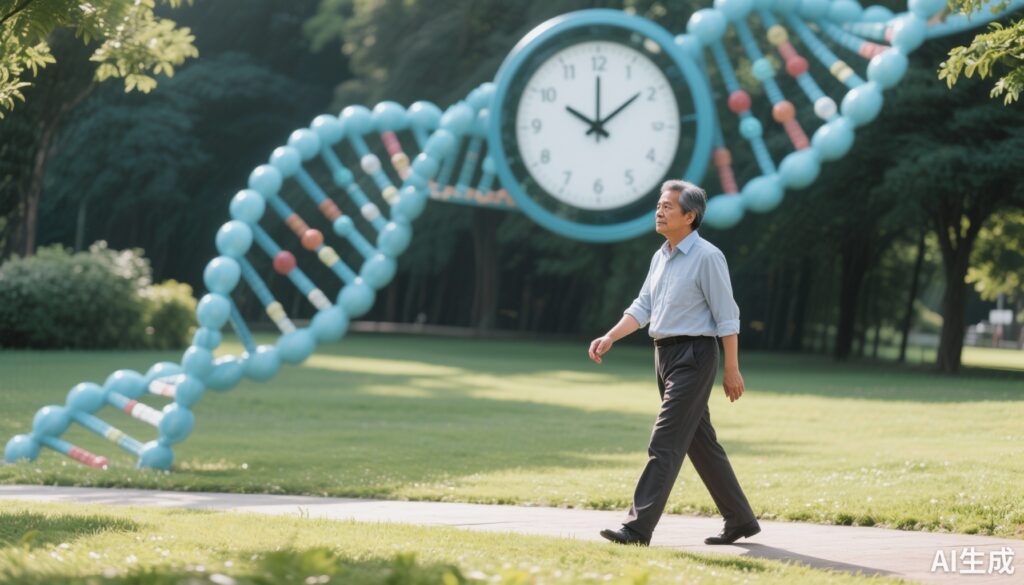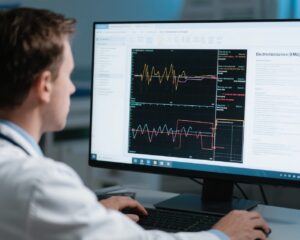Introduction: The Exercise and Longevity Debate
Every time you scroll through social media, you might see friends posting their running trails or gym selfies, often accompanied by captions like “Exercise gives me new life” or “Full of energy today!” Likewise, during family gatherings, older relatives often advise, “Keep moving, it keeps you young!”
This everyday enthusiasm reflects a widespread belief: that regular physical activity is key to a long, healthy life. But while one camp passionately champions daily exercise as the fountain of youth, another views rest and calm lifestyle choices as equally valid, noting that some creatures live long lives without moving much. So, what’s the real story?
What Does Science Say? The Twin Study That Challenges Assumptions
A landmark study published in the European Journal of Epidemiology provides new insights. Unlike many previous studies, this one tracked over 22,000 Finnish twins for 30 years, combining self-reported physical activity records with cutting-edge biological aging markers and mortality data. The researchers aimed to untangle a thorny question: Does exercise directly slow aging and extend life, or do naturally healthier people simply tend to be more active?
Study Design and Methods
The Finnish Twin Cohort study began in 1975, enrolling 22,750 monozygotic (identical) and same-sex dizygotic (fraternal) twins aged 18 to 50. Physical activity was assessed repeatedly via questionnaires in 1975, 1981, and 1990, calculating metabolic equivalents (METs) to quantify intensity. Using latent profile analysis (LPA), participants were grouped into four long-term exercise patterns:
- “Sedentary” (8.8%)
- “Moderately active” (38.4%)
- “Active” (45.5%)
- “Highly active” (7.3%)
Biological aging was measured through two established epigenetic clocks:
- PC-GrimAge: Predicts mortality risk based on DNA methylation
- DunedinPACE: Estimates the pace of biological aging
Mortality data from national registries followed these twins through 2020. Statistical models controlled for lifestyle confounders like smoking, alcohol intake, education, and body mass index (BMI), and intra-pair twin comparisons helped isolate genetic and environmental influences.
The Surprising U-Shaped Relationship Between Exercise and Aging
Contrary to the smooth positive correlation many expect, the study uncovered a U-shaped relationship. Both sedentary individuals and the highly active group had biological ages higher than those moderately or actively exercising. After adjusting for confounding factors, the benefit of physical activity in slowing biological aging diminished considerably.
Interestingly, those in the highly active group showed an average biological age 1.2 to 1.6 years older than moderate and active groups, suggesting that excessive exercise might inadvertently accelerate aging at the cellular level.
Exercise and Mortality: Only Short-Term Benefits?
During the follow-up, mortality rates were highest in the sedentary group (38.8%) and progressively lower in the moderate (30.8%), active (29.0%), and highly active (25.4%) groups. Initially, exercise seemed to reduce all-cause death risk by 16% to 24% compared to inactivity.
However, when factoring in BMI and other lifestyle variables, this benefit shrank to a modest 7% reduced risk, which only held in the short-term (1990-2011). Over the longer term (2012-2020), the mortality difference vanished.
This pattern strongly hints at “reverse causality” — healthier people tend to exercise more, while the less healthy remain inactive and are more likely to die earlier, creating an illusion that exercise directly prevents death.
Exclusion of Cardiovascular Disease Reveals Health-Related Bias
To dig deeper, researchers excluded participants with self-reported heart disease at baseline. This “clean” subgroup analysis further weakened the link between exercise and reduced mortality, eventually losing statistical significance.
This finding underlines how a higher burden of illness among sedentary people inflates the observed protective effect of exercise.
The Power of Twins: Genetics and Shared Environment Influence Both Exercise and Longevity
The twin design allowed comparison within pairs where one twin exercised more than the other. These intra-pair analyses revealed that the association between physical activity and longevity was largely explained by shared genetics and early-life environment.
In other words, certain genetic factors might predispose individuals both to be more physically active and to live longer. This nuance challenges the common notion that exercise alone drives increased lifespan.
Dispelling Misconceptions: Exercise Is Not a Simple Lifespan Guarantee
Popular culture often presents exercise as an unqualified good, and inactivity as inherently harmful. However, this study reveals a more complicated picture:
– The relationship between physical activity and aging is nonlinear, with too little and possibly too much exercise linked to faster biological aging.
– Exercise benefits on mortality appear limited to short-term and are partially confounded by underlying health and genetics.
– Reverse causation bias means ill individuals often can’t exercise, inflating inactivity’s perceived risks.
Practical Takeaways on Physical Activity and Health
Despite the intricate findings, this does not diminish the importance of regular, moderate exercise for overall health and quality of life. Here are some evidence-based recommendations:
| Practice | Rationale | Example |
|—————————–|————————————–|———————————————-|
| Aim for moderate activity | Linked with slower biological aging | 150 minutes/week of brisk walking or cycling|
| Avoid excessive intensity | Potential to accelerate cellular aging| Avoid extreme high-intensity training without medical supervision|
| Focus on consistency | Long-term habits outweigh quick fixes| Daily pacing with walks or light jogging |
| Combine with healthy lifestyle| Exercise complements balanced diet, sleep, and stress management | Balanced diet, 7-8 hours sleep, mindfulness |
Expert Insights
Dr. Joanna Smith, a gerontology expert, notes: “This study powerfully illustrates that health and longevity are multifactorial. Exercise contributes, but it intertwines with genetics and early life factors. The key is sustainable habits that fit one’s lifestyle rather than chasing extremes.”
Meanwhile, Dr. Michael Chen, a sports medicine physician, cautions: “Overtraining without adequate recovery may worsen health over time. Patients should focus on enjoyable, feasible exercise that encourages consistency.”
Patient Scenario: John’s Journey to Balanced Fitness
John, a 52-year-old office worker, wants to live a long and healthy life. Inspired by stories of marathon runners, he initially pushed himself to daily high-intensity runs, which he found exhausting and stressful. After consulting his physician and learning about the nuanced research, John shifted to moderate-intensity exercise like brisk walking and cycling, aiming for 150 minutes per week.
Over the next years, John feels more energetic, sleeps better, and maintains a healthy weight without burnout. His story underscores that tailored, moderate exercise combined with good lifestyle choices is often the most sustainable path to healthy aging.
Conclusion: A Balanced View on Exercise and Longevity
The Finnish twin study reshapes our understanding of how physical activity influences aging and lifespan. While moderate exercise supports healthy aging and reduces short-term mortality risk, the observed benefits are intertwined with genetics and baseline health, and may diminish over time.
Exercise is not a panacea nor a one-size-fits-all prescription. Instead, moderate, consistent physical activity tailored to individual ability and preference, combined with a healthy lifestyle, remains the most trusted approach to preserve vitality and extend healthspan.
References
Kankaanpää A, Tolvanen A, Joensuu L, et al. The associations of long-term physical activity in adulthood with later biological ageing and all-cause mortality – a prospective twin study. Eur J Epidemiol. 2025 Jan;40(1):107-122. DOI: 10.1007/s10654-024-01200-x
World Health Organization. Physical Activity Guidelines. 2020.
Horvath S. DNA methylation age of human tissues and cell types. Genome Biology. 2013;14(10):R115.



